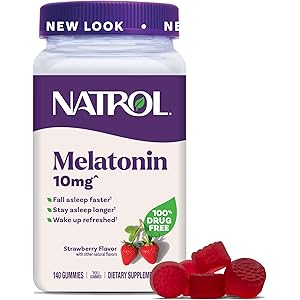Vital Proteins Unflavored Collagen Peptides, 20 OZ
$42.99 (as of October 25, 2025 06:13 GMT +00:00 - More infoProduct prices and availability are accurate as of the date/time indicated and are subject to change. Any price and availability information displayed on [relevant Amazon Site(s), as applicable] at the time of purchase will apply to the purchase of this product.)Understanding Low-Sodium Diets
Low-sodium diets have gained popularity as a means to improve health and manage conditions such as hypertension. These diets typically restrict sodium intake to less than 2,300 milligrams per day, with some recommendations suggesting even lower limits for certain individuals. The primary goal is to reduce blood pressure and decrease the risk of heart disease. However, the effectiveness and necessity of such diets can vary significantly among individuals, leading to ongoing debates about their overall benefits and potential drawbacks.
The Science Behind Sodium and Health
Sodium is an essential mineral that plays a crucial role in maintaining fluid balance, nerve function, and muscle contraction. However, excessive sodium intake is linked to elevated blood pressure, which can lead to serious health issues, including stroke and heart attack. Research indicates that while some individuals may benefit from a low-sodium diet, others may not experience significant changes in blood pressure or health outcomes. This variability underscores the importance of personalized dietary recommendations based on individual health profiles.
Who Should Consider a Low-Sodium Diet?
Individuals with specific health conditions, such as hypertension, heart disease, or kidney disease, are often advised to adopt a low-sodium diet. For these individuals, reducing sodium intake can be a critical component of their overall treatment plan. Additionally, older adults and those with a family history of cardiovascular issues may also benefit from monitoring their sodium consumption. However, it is essential to consult with a healthcare provider before making significant dietary changes to ensure that the approach is appropriate for one’s health status.
Common Myths About Low-Sodium Diets
There are several myths surrounding low-sodium diets that can lead to confusion. One common misconception is that all sodium is harmful and should be eliminated entirely from the diet. In reality, sodium is necessary for various bodily functions, and a complete elimination can lead to health issues. Another myth is that low-sodium diets are bland and unappetizing. With the right herbs, spices, and cooking techniques, it is possible to create flavorful meals that adhere to low-sodium guidelines.
How to Implement a Low-Sodium Diet
Implementing a low-sodium diet involves more than just cutting back on table salt. It requires a comprehensive approach that includes reading food labels, choosing fresh or minimally processed foods, and being mindful of hidden sources of sodium in condiments, snacks, and restaurant meals. Cooking at home allows for greater control over sodium content, enabling individuals to experiment with various herbs and spices to enhance flavor without relying on salt.
Potential Risks of Low-Sodium Diets
While low-sodium diets can offer health benefits, they are not without potential risks. Some individuals may experience adverse effects, such as nutrient deficiencies, if they overly restrict sodium without proper guidance. Additionally, extremely low sodium levels can lead to hyponatremia, a condition characterized by low sodium concentration in the blood, which can cause symptoms ranging from headaches to severe neurological issues. Therefore, it is crucial to strike a balance and ensure adequate nutrient intake while following a low-sodium diet.
Low-Sodium Diets and Weight Management
There is a growing interest in the relationship between low-sodium diets and weight management. Some studies suggest that reducing sodium intake may help with weight loss, as high-sodium foods are often calorie-dense and contribute to water retention. However, the connection is not straightforward, and weight loss is primarily influenced by overall caloric intake and physical activity levels. Therefore, while a low-sodium diet may be beneficial for some, it should be part of a broader strategy that includes healthy eating and regular exercise.
Low-Sodium Alternatives and Substitutes
For those looking to reduce sodium intake, there are numerous alternatives and substitutes available. For instance, salt substitutes made from potassium chloride can provide a similar flavor profile without the sodium content. Additionally, many brands offer low-sodium versions of common condiments, broths, and snacks. Exploring new recipes that focus on fresh ingredients can also help individuals discover delicious meals that align with their dietary goals while minimizing sodium intake.
The Role of Education in Low-Sodium Diets
Education plays a vital role in the successful adoption of low-sodium diets. Understanding food labels, recognizing high-sodium foods, and learning how to prepare meals with less salt are essential skills for individuals aiming to reduce their sodium intake. Health professionals, including dietitians and nutritionists, can provide valuable resources and support to help individuals navigate the complexities of dietary changes, ensuring they make informed choices that promote long-term health and well-being.


